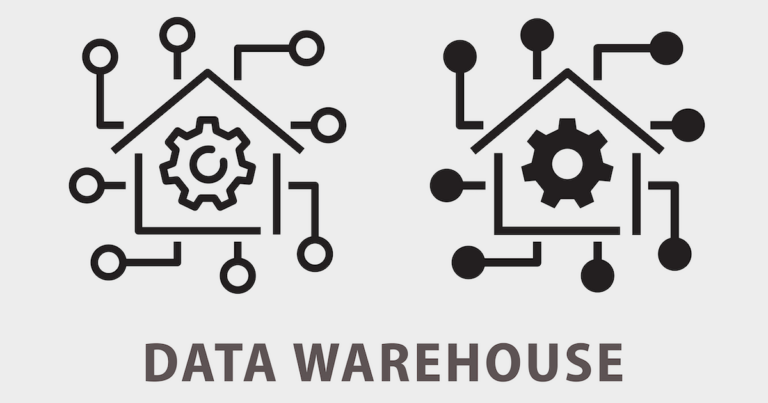Business success in today’s time highly relies on streaming live data analytics that needs to be performed in near real-time. No company can just depend on historical data to stay competitive. In today’s hyper-connected world where people and machines generate streaming data in a wide variety, enterprises require far more efficient mechanisms for storing, indexing, and analyzing data that modern data warehouses serve well.
Data warehouses have been building blocks of data ecosystems over the past decade. This unified data repository has served as a data source for business intelligence (BI) systems used by business analysts, data engineers, data scientists, and professionals alike to make critical business decisions.
Even today, no one can ignore the importance of data warehouses except the downgrades faced due to its on-premises deployment that no longer provides the speed and scalability a business needs to move and assist its growing user-base.
However, modern data warehouses that leverage cloud advantages offer much better and more efficient storage and faster data querying. The cloud-based data warehouse can even handle structured and semi-structured data and query them simultaneously, which was not possible in traditional data warehouses designed to store only cleaned structured data. On the other side, enterprise users can query historical data and stream live data simultaneously on a cloud data warehouse.
Cloud Data Warehouse Offers Speed, Scalability, And Performance
Data warehouses are designed so that analytical queries can run fast. For older on-premises data warehouses, reports with multiple queries based on historical data were usually run overnight. For modern cloud data warehouses, the performance requirements are more difficult, as analysts are expected to interactively run queries based on historical data plus streaming data and then dig deeper with more queries.
Cloud data warehouses are typically designed to scale CPU capacity as needed so that interactive queries against petabytes of data can return answers in minutes. Some cloud data warehouses can increase CPU resources while a query is running without restarting the query and reduce them again when the data warehouse is idle. Aggressive up-scaling and down-scaling can be excellent strategies to achieve high performance when required for low overall cost.
List Of Top Cloud Data Warehouse Providers
To meet the growing needs of performing advanced analytics, top vendors are available with their cloud-based data warehouse platforms. While many popular solutions, including Amazon Redshift, Snowflake, Big Query, and Microsoft Azure Synapse Analytics, offer similar capabilities, these can be different in pricing, architecture, scalability, security, and other factors. Let’s dive deep into the available cloud-based data warehouse services for enterprises:
1. Amazon Redshift
Redshift is a fully managed AWS data warehouse solution that accelerates time to insights with fast, easy, and secure analytics at scale. Amazon Redshift is available in both provisioned and serverless options, making it easy for businesses to run and scale analytics without managing a data warehouse. Redshift’s SQL dialect is based on PostgreSQL and uses an architecture familiar to many on-premises data warehouses users. Amazon Redshift can analyze data from terabytes to petabytes and supports real-time insights and predictive analytics on all data across operational databases, data lake, data warehouse, and third-party datasets. Amazon also claims to offer all this at a price-performance of up to 3x better than other cloud data warehouses, allowing you to keep your costs predictable.
2. Big Query
Google’s BigQuery is a fully managed, serverless data warehouse service. It automatically scales to match storage and computing power needs, hiding underlying hardware, database, nodes, and configuration details. This cloud data warehouse provides columnar and ANSI SQL databases that can analyze terabytes to petabytes of data at incredible speeds. Other key features of BigQuery include doing Geospatial analysis with BigQuery GIS. Moreover, data scientists and data analysts can quickly build and operationalize ML models on wide-ranging structured or semi-structured data using simple SQL—in no time. Moreover, there is an available BigQuery BI Engine that allows interactive real-time data analysis with high accuracy.
3. Snowflake
Snowflake is the first multi-cloud data warehouse on AWS, GCP, and Azure. It is fully managed but doesn’t run on its own cloud. In addition, Snowflake features global data replication that allows moving data to any cloud in any region without re-coding applications or learning new skills. It will enable you to spin up as many virtual warehouses as you need to parallelize and isolate the performance of individual queries. You can access this MPP cloud-based solution through a web browser, the command line, an analytics platform, or Snowflake JDBC, ODBC, or other supported drivers. It also has native support for document store formats like JSON, PRC, XML and it further supports ACID-compliant relational processing.
4. Azure Synapse Analytics
Microsoft with Azure Synapse Analytics brings together enterprise data warehousing and big data analytics. Like AWS, this azure data warehouse also supports querying either provisioned resources or on-demand serverless data. It is a cloud-native service with a distributed SQL processing engine built on the foundation of SQL server supporting high demanding enterprise data warehousing workloads. It supports a unified experience to ingest, prepare, manage, and serve data for various business needs. In addition, Azure Synapse supports and saves data in the form of columnar storage and abstracts physical machines by representing compute power in the form of data warehouse units. It allows users to scale compute resources quickly and seamlessly at will. Further, it supports limitless scale, converged analytics along unmatched security.
Conclusion
Options available in the market are many and serve different business use-cases in different scales. Whichever cloud-based data warehouse service you decide on to fulfill your business requirements, keep in mind to thoroughly analyze the use-cases. You may also need help from data scientists, business analysts and other decision makers using analytics to re-define ETL processes to abstract reports the way they need it. For additional help, you should also check data warehouse development best practices discussed with step-by-step processes which should be considered before embarking on data warehouse services.




